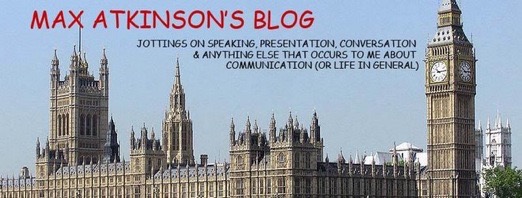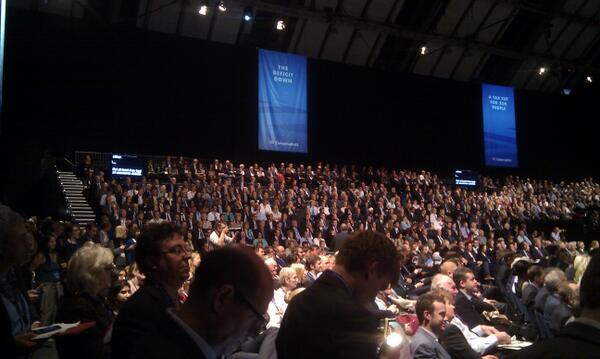It can hardly have passed anyone's notice that one of the big media stories over the past few days has been Health Secretary Jeremy Hunt's claims about the number of our aged population who are 'chronically lonely' (see above clip).
For me, his casual use of statistics brought back a vivid memory from more than forty years ago of an event that had made me deeply skeptical about the validity of treating such numbers as 'hard facts'.
Tony Benn sets up a research fellowship
A not so well-known fact about my early research is that I once held a Post Office research fellowship that had been created by the then Postmaster General, Tony Benn, at the University of Essex - which led to my conducting a survey of just over 1,000 randomly sampled respondents in the UK who were aged 65 and over.
In those pre-privatisation days, the Post Office (GPO) still ran our telephone system and Harold Wilson's Labour government was under pressure to supply free telephones to the country's elderly. But then, as now, research into a problem is always a much cheaper option than doing anything about it.
Mr Benn was a friend of Professor Peter Townsend, who was already well known for his definitive books on isolation in old age and who had just become the first head of sociology at the new University of Essex. So that's where the money for the GPO research fellowship went - and, as a lowly research assistant, I was in the right place at the right time to be lucky enough to get the job.
'Objective' and 'subjective' isolation
Townsend and other researchers in the area had distinguished between two types of isolation:
- Objective: How often did respondents see their family and friends?
- Subjective: How many respondents said they felt lonely?
In the questionnaires, the second of these was measured by asking respondents: "Are you often, sometimes or never lonely", to which the results came out as remarkably similar from one survey to another*. For mine, if memory serves me correctly, the results were:
- Often lonely: 7%
- Sometimes lonely: 23%
- Never lonely: 70%
So, by lumping "sometimes" and "often" lonely together, we could conclude that just under one in three elderly people experienced a degree of loneliness.
BUT...
While piloting the draft questionnaire, I interviewed an 80 year old woman who quite severely disabled and more or less housebound. She had no trouble answering the key questions with an immediate and emphatic "Never lonely".
As I packed away her completed questionnaire in my bag and explained that I had to be going, she begged be to stay a bit longer, and launched into a series of sad stories about relatives who never came to see her and about how her disability prevented her from going to see the few of her friends who were still alive. How could I refuse her insistence that I must have enough time for a cup of tea?
Yet the 'hard fact', already recorded in my questionnaire, was that she was one of the 70% who were "never lonely".
This contradiction between her answers to the question on the questionnaire and what she said over tea afterwards made gave me serious doubts about the validity of such apparently 'hard facts'.
All these years later, thanks to Mr Hunt, the doubts have come back - and I'm no less suspicious of his 'hard facts' today as I was of my own 'hard facts' then.
"Chronically lonely" sounds even worse than "very lonely" - which raises the question of whether more or fewer than the 7% who confessed to being "very lonely" in 1967 would admit to being "chronically lonely" in 2013? Mr Hunt may have meant well by raising the issue with a wider audience, but to imply that such figures are 'hard facts' worth taking seriously is to assume rather a lot.
P.S. A missed opportunity?
It wasn't as if this experience were the only thing that had made me start questioning the methodology of what I was doing. It was at a time when important debates were getting under way in in academic sociology: quantitative research and survey methods were coming under attack from qualitative researchers; positivism, the hypothetico-deductive model of science and the collection of 'hard facts' were being challenged by approaches like symbolic interactionism, ethnomethodology and conversation analysis. And Thomas Kuhn had just taught us the new phrase 'scientific paradigm'.
My own PhD research was already veering in this latter direction, as central theme was a critique of the paradigm established by Emile Durkheim's 1897 classic Le Suicide (eventually published as Discovering Suicide: Studies in the Social Organizatin of Sudden Death, 1978).
Meanwhile, one of my colleagues at Essex, Dorothy Smith had just heard from Erving Goffman at UC Berkeley that he had a rather promising graduate student called Harvey Sacks who was writing a PhD thesis based on live tape-recordings of telephone calls to the Los Angeles Suicide Prevention Agency, and even suggested that I might do something similar rather than the conventional survey research that was being planned.
Ignoring such excellent advice, I played safe by remaining loyal to the methodology favoured in Peter Townsend's books on the elderly and poverty.
By the time I had finished my PhD, however, Sacks had put in quite an important appearance in my thesis. And later on, much of the motivation and inspiration for my later work on public speaking and presentation (books at the bottom of this page) came directly from him and the other main founders of conversation analysis, Emanuel Shegloff and Gail Jefferson.
P.P.S. The same results yet again
Less than 24 hours after posting this, I was fascinated to learn that a figure very close to the 7% saying they were 'often lonely' in my survey appeared in this bar chart, showing the percentage of 'over 60s reporting frequent loneliness' in the UK.
My thanks to @FlipChartRick for drawing my attention to his blog Flip Chart Fairy Tales, which featured the chart - and where you can read more comments about what Mr Hunt said.

P.P.S. The same results yet again
Less than 24 hours after posting this, I was fascinated to learn that a figure very close to the 7% saying they were 'often lonely' in my survey appeared in this bar chart, showing the percentage of 'over 60s reporting frequent loneliness' in the UK.
My thanks to @FlipChartRick for drawing my attention to his blog Flip Chart Fairy Tales, which featured the chart - and where you can read more comments about what Mr Hunt said.

